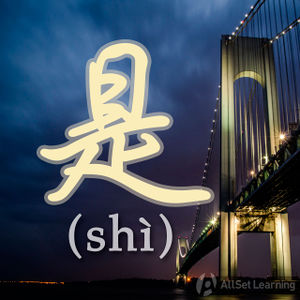Difference between revisions of "Offering choices with "haishi""
m (Text replace - "Asking Questions" to "Asking questions") |
|||
| Line 26: | Line 26: | ||
|- | |- | ||
! Subject !! Verb !! Option A !! 还是 !! Option B || | ! Subject !! Verb !! Option A !! 还是 !! Option B || | ||
| + | |- | ||
| + | | 你 || 要 || 茶 || <em>还是</em> || 咖啡 || ? | ||
|- | |- | ||
| 你 || 是 || 美国人 || <em>还是</em> || 英国人 || ? | | 你 || 是 || 美国人 || <em>还是</em> || 英国人 || ? | ||
| Line 35: | Line 37: | ||
| 你 || 想吃 || 中国菜 || <em>还是</em> || 法国菜 || ? | | 你 || 想吃 || 中国菜 || <em>还是</em> || 法国菜 || ? | ||
|- | |- | ||
| − | | 那 || 是 || | + | | 那 || 是 || 大猫 || <em>还是</em> || 小老虎 || ? |
|} | |} | ||
Revision as of 05:32, 14 August 2012
-
Level
-
Similar to
-
Used for
-
Keywords
还是 (háishì) is used in Chinese to provide options in a question. This is equivalent to one use of "or" in English.
Structure
Option A + 还是 + Option B
You can then put this into all kinds of questions with the following structure:
Subject + Verb + Option A + 还是 + Option B
Examples
| Subject | Verb | Option A | 还是 | Option B | |
|---|---|---|---|---|---|
| 你 | 要 | 茶 | 还是 | 咖啡 | ? |
| 你 | 是 | 美国人 | 还是 | 英国人 | ? |
| 你 | 喜欢 | 啤酒 | 还是 | 葡萄酒 | ? |
| 他 | 是 | 医生 | 还是 | 老师 | ? |
| 你 | 想吃 | 中国菜 | 还是 | 法国菜 | ? |
| 那 | 是 | 大猫 | 还是 | 小老虎 | ? |
Please note that 还是 is for offering options in a question. It should not be used for "or" in statements (see below).
See also
- "Or" in statements
- "Had better" with "haishi" (advanced article)
- Providing two options with double "huozhe" (advanced article)
Sources and further reading
Books
- Integrated Chinese: Level 1, Part 1 (3rd ed) (pp. 76-7, 257-8) →buy
- New Practical Chinese Reader 1 (新实用汉语课本1) (pp. 179) →buy
- New Practical Chinese Reader 1 (新实用汉语课本1)(2nd ed) (pp. 206-7, 251) →buy
Websites
- East Asia Student: The difference between 还是 and 或者



